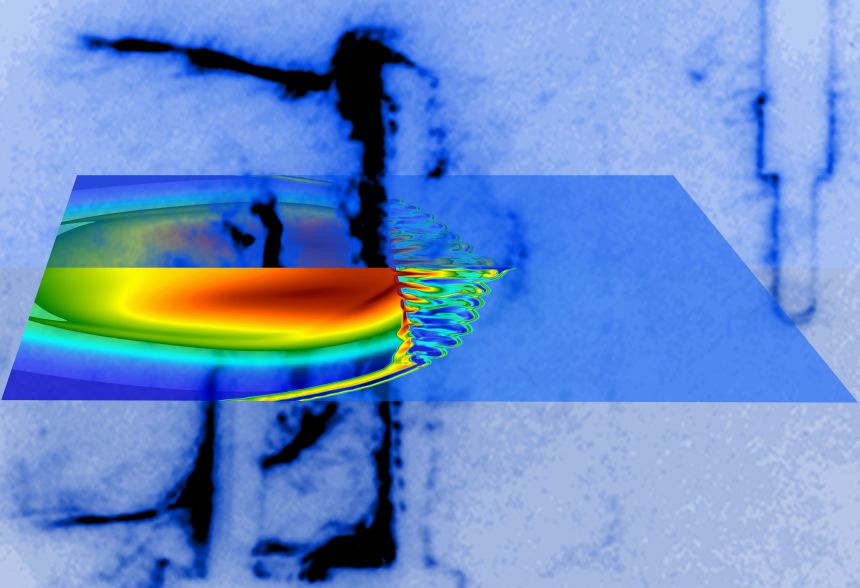Powerful Lasers Mimic Supernova Explosions in the Lab

Supernovas are among the biggest blasts in the known universe. The star explosions release a burst of radiation that can outshine an entire galaxy and span across several light-years. But now, scientists have figured out how to fit supernovas in a lab ... with lasers.
Researchers have simulated these violent stellar eruptions in a scaled-down fashion to help solve a mystery about the shape of supernova leftovers.
When a star goes supernova, it leaves behind a skeleton made of expanding dust and gas that astronomers call a remnant. Some supernova remnants, like the famous Cassiopeia A, do not expand uniformly through space, but instead produce puzzling shapes filled with knots and twists. [Supernova Photos: Great Images of Star Explosions]
To investigate why these bizarre kinks form, scientists from the University of Oxford designed a method to recreate supernova explosions with lasers 60,000 billion times more powerful than a regular classroom laser pointer. Using this technique, the team of scientists, led by Gianluca Gregori, could observe the blast up close instead of from thousands of light-years away.

Supernovas can happen two different ways. The first kind occurs when one star sucks matter away from another nearby star. As the star gets bigger, it becomes unstable and explodes. Supernovas also happen near the end of a star's life. As the star's core runs out of fuel, it starts sucking in the surrounding matter. The core gets so heavy that it collapses under its own gravitational force and explodes.

"The experiment demonstrated that as the blast of the explosion passes through the grid, it becomes irregular and turbulent, just like the images from Cassiopeia," Gregori, professor of physics at the University of Oxford, said in a statement.
The researchers, who published their findings in the journal Nature Physics on June 1, also confirmed that the turbulence the blast experiences increases the strength of the magnetic fields often found in supernova remnants. The team thinks their experiments could provide some insight into how magnetic fields were first created.
Get the Space.com Newsletter
Breaking space news, the latest updates on rocket launches, skywatching events and more!
The study of supernovas has already revealed valuable information about the history of the universe. The explosions have provided evidence that the universe is expanding, and they constitute a record of how materials spread around space; elements from exploded stars are found on Earth, and the material a star spews when it explodes can become the source of a new star.
Follow Kelly Dickerson on Twitter. Follow us @Spacedotcom, Facebook or Google+. Originally published on Space.com.
Join our Space Forums to keep talking space on the latest missions, night sky and more! And if you have a news tip, correction or comment, let us know at: community@space.com.

Kelly Dickerson is a staff writer for Live Science and Space.com. She regularly writes about physics, astronomy and environmental issues, as well as general science topics. Kelly is working on a Master of Arts degree at the City University of New York Graduate School of Journalism, and has a Bachelor of Science degree and Bachelor of Arts degree from Berry College. Kelly was a competitive swimmer for 13 years, and dabbles in skimboarding and long-distance running.









